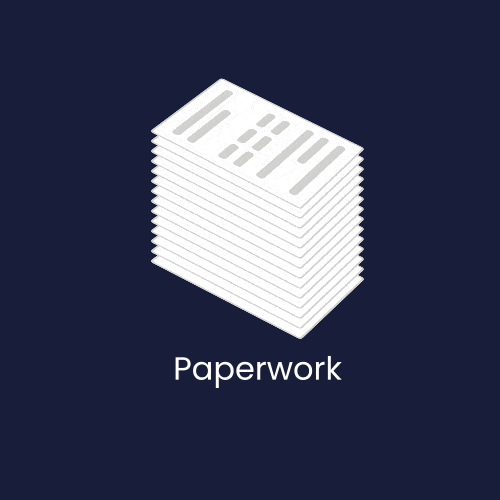When it comes to meeting delivery and transportation needs while reducing costs and resource usage, Route Optimization is a widely sought-after solution in the logistics sector. Nevertheless, depending on the particular use case, the notion of Route Optimization might have a variety of applications. In this blog article, we will examine how Route Optimization may be tailored to various business contexts using information from actual nuVizz customers’ case studies.
Introduction to Route Optimization
The management of logistics and transportation depends heavily on route optimization. It entails determining the travel or delivery route that will be the shortest in terms of distance, time, and cost. Route optimization increases operational effectiveness and customer satisfaction by applying sophisticated algorithms and taking into account numerous variables such as traffic conditions, vehicle capacity, and delivery windows. Businesses may increase overall production, minimize fuel use, and make the most use of resources. It helps to respond to changing circumstances and streamline the logistics process through data analysis and real-time updates. In the end, supply chain optimization and finding sustainable and economical transportation solutions both rely heavily on route optimization.
Benefits of Route Optimization:
- Cost savings: Routes that are optimized save operating expenses by minimizing fuel consumption and wear and tear on the vehicles.
- Time Efficiency: Faster routes allow for more deliveries or service calls in a given amount of time by cutting down on travel time.
- Improved Customer Satisfaction: On-time delivery, accurate ETAs, and dependable service result in happy customers.
- Improved Resource Utilization: Distribute vehicles, drivers, and other resources effectively to increase productivity.
- Reduced Emissions: By reducing carbon emissions, optimized routes help to preserve the environment.
- Real-time Adaptability: Route optimization software enables nimble alterations in response to traffic or weather conditions.
- Enhanced Operational Efficiency: Process streamlining and improved organization enhance logistics operations as a whole.
- Improved Safety: Safer roads can be given priority on optimized routes, while high-risk locations can be avoided, decreasing dangers and accidents.
- Better Compliance: Route optimization ensures that rules like load restrictions or delivery windows are followed.
- Data analysis and insights: Route optimization offers useful data and insights for decision-making and ongoing improvement.
Utilization of Route Optimization:
1. Strategic Route Planning: Tailoring Routes to Fulfill Shipper Requirements
Dedicated transportation, project-based assistance, freight forwarding, and last-mile delivery are just a few of the varied shipper expectations that a national 4PL with both asset-based and non-asset-based operations must meet. They use strategic planning through Route Optimization in order to accurately bid for new projects. They simulate various situations, such as vehicle kinds, pool point locations, and route windows, by uploading the demand profile and vehicle constraints into the system. This helps them to examine cost structures rapidly and pinpoint the best paths, resulting in accurate project pricing and successful project execution.
2. Optimizing Customer Delivery Windows for Cost Efficiency
A significant manufacturer of baked items has the difficulty of achieving client delivery windows while reducing costs because they rely on a 3PL provider for transportation. Their main objective is cost-effective delivery within predetermined time frames rather than asset utilization. They can establish the ideal number of routes, total miles, and associated transportation costs by utilizing strategic route planning and route optimization. By ensuring on-time deliveries at the lowest feasible price, this strategy enables them to streamline processes and improve customer satisfaction.
3. Hybrid Optimization – Combining Static Routes with On-Demand Orders
A company that offers logistical services for medical labs often runs on pre-planned static routes with set collection and delivery windows. These routes are generated and assigned automatically by the nuVizz platform, and drivers are assigned to them. But they also run into impromptu, on-demand pickups for urgent jobs. Real-time dynamic optimization is possible with the nuVizz automation workflow engine. Taking into account the stops on the current route, the pickup locations, and the time limits, the system intelligently assigns the best driver. Efficiency is increased without requiring manual intervention by seamlessly integrating on-demand orders into already-existing routes.
4. Dynamic and Real-time Dynamic Route Optimization: Speeding Up Auto Parts Deliveries
When an order is placed before 5 o’clock, an auto parts dealer aims to efficiently deliver it the following day. Every day at 5:00 PM, routes based on zones are automatically generated and sent to drivers using route optimization rules. Drivers are directed through the delivery process with the nuVizz smartphone app, which also notifies clients of their ETA and promotes efficient operations. The platform accepts on-demand requests for urgent repairs in addition to planned requests. The workflow engine will distribute the orders to the most qualified driver based on proximity and availability when repair shops post ad-hoc requests through the client order portal.
5. Hub and Spoke with PUD Operations: Streamlining Freight Forwarding
The nuVizz platform serves as the hub and spoke for a large national freight forwarder with numerous terminals across the country. Automated route development makes sure that vehicles pick up the product from the hub and deliver it to clients efficiently each day. The forwarder also manages requests for pick-up and drop (PUD) along the routes. These requests could entail delivering goods from a client to the hub or carrying out pickups and deliveries between nearby locations without using the hub. The platform uses the nuVizz optimization engine to automatically assign the best driver for each PUD order while taking pickup and delivery time limits into account.
6. The Versatility of Route Optimization
The variety of nuVizz’s customer scenarios demonstrates that there is no one-size-fits-all Route Optimization solution. Each client has a unique perspective on Route Optimization, and needs can change depending on the kinds of shippers they work with and the services they provide. It’s crucial to keep in mind, though, that having various requirements doesn’t always necessitate looking for distinct answers. The nuVizz platform distinguishes itself by providing insights into different Route Optimization scenarios and linking real-time dispatch and execution data to deliver the best of both worlds.
Conclusion:
In the logistics sector, route optimization is a flexible solution that can be used in various business use cases. In order to optimize operations, cut costs, and raise customer satisfaction, Rout Optimization offers a valuable tool that can be tailored to specific needs and limits. Businesses may exploit the advantages of route optimization while optimizing their logistical procedures by utilizing the capabilities of platforms like nuVizz.

